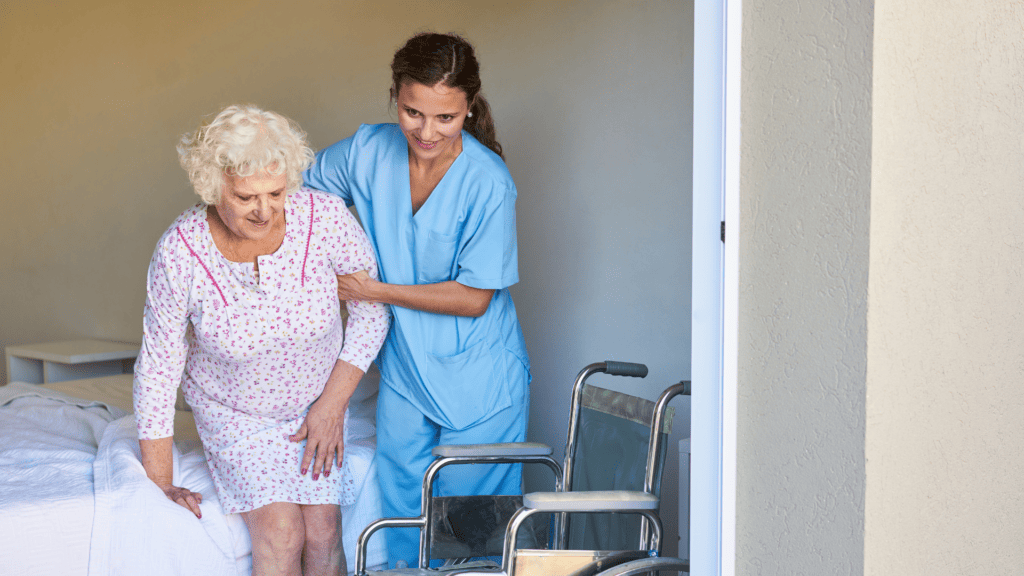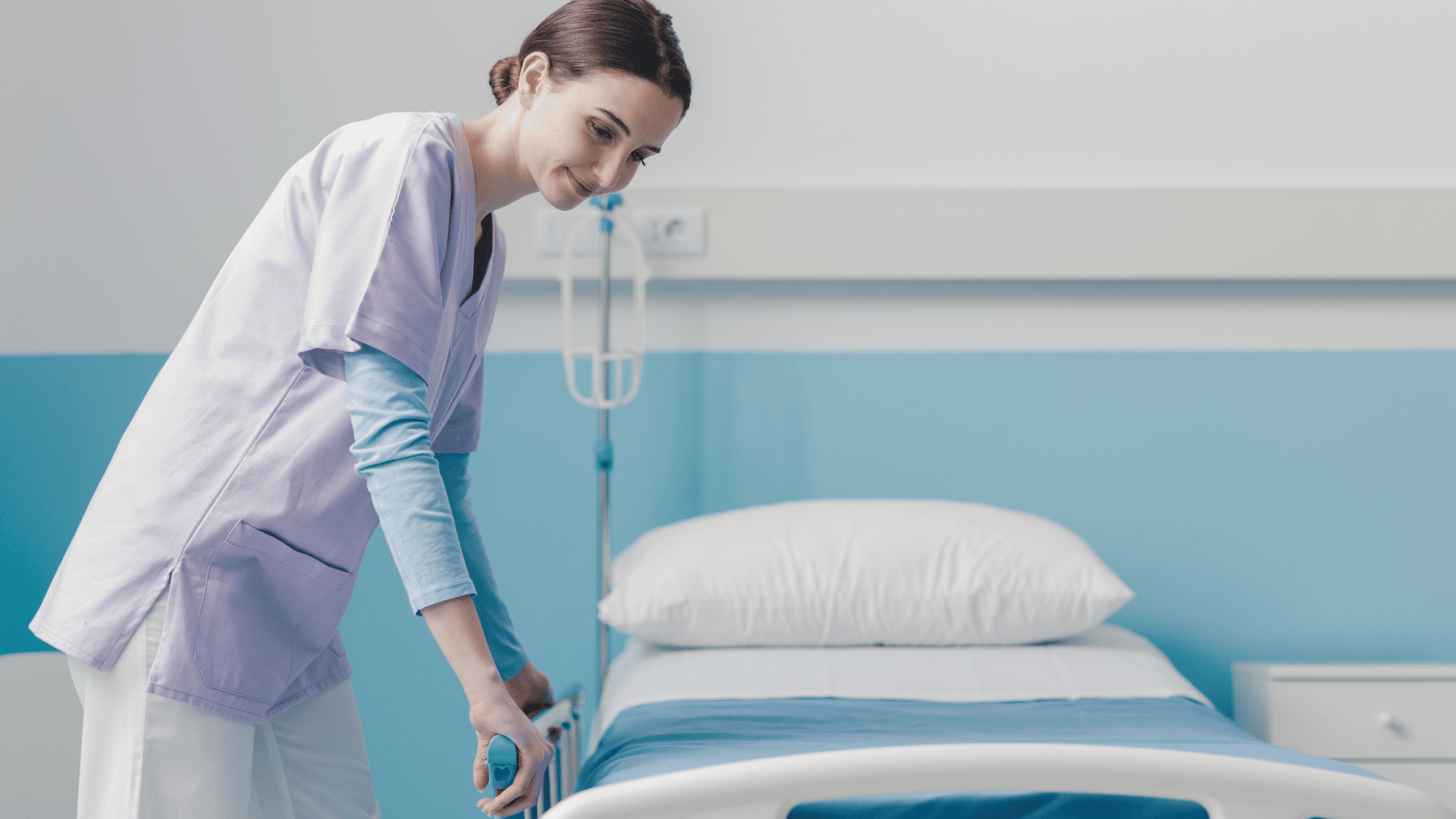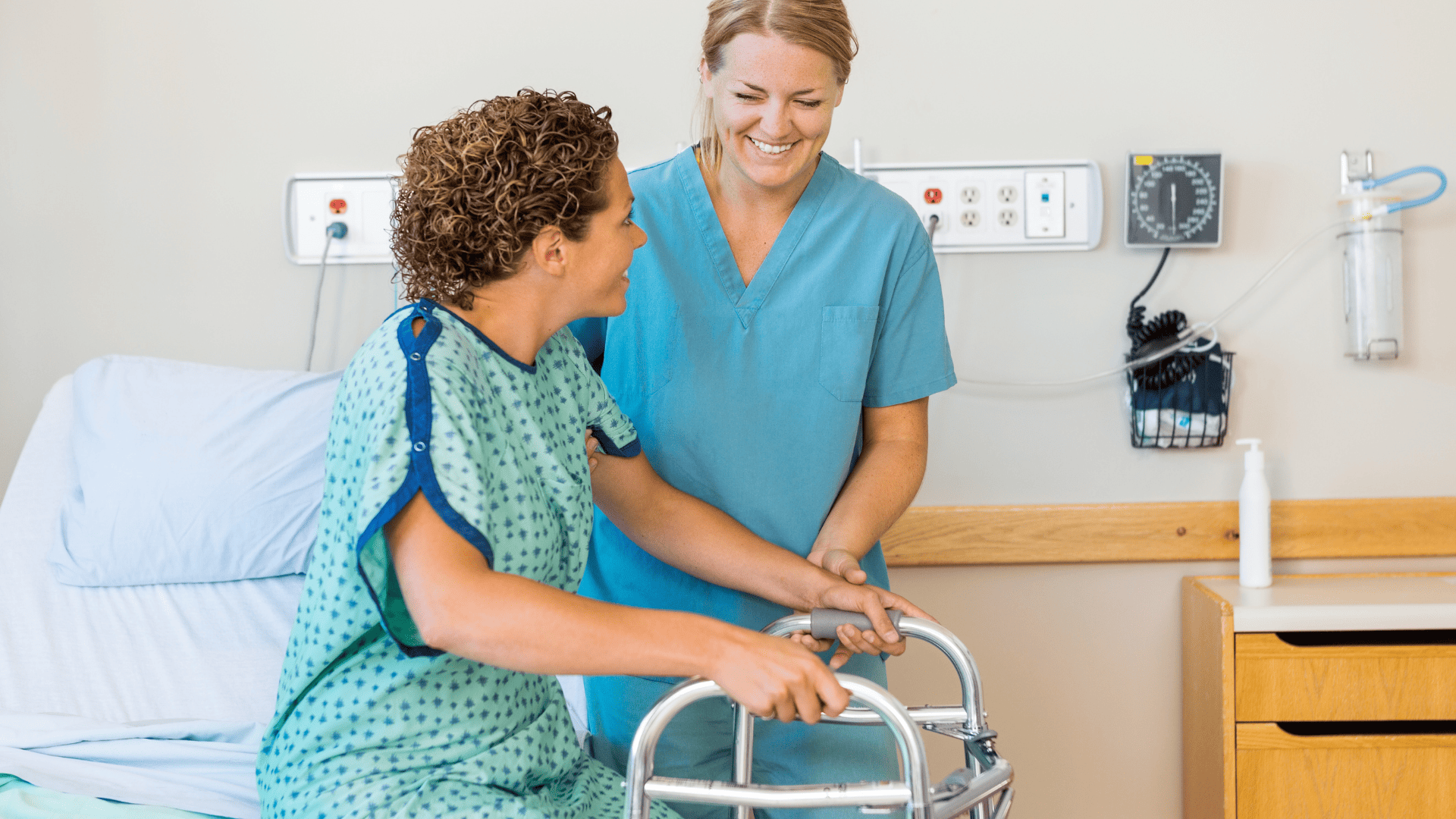Significant advancements have been made in recent years to improve the safety of many elements of our lives, and one such area that has gained a lot of attention is the prevention of injuries associated with the use of beds. From establishing crib safety guidelines to developing innovative adult bedding technologies, many people have worked hard to lower the risk of injury when sleeping. Despite the many precautions that have been taken, an astonishing number of bed-related injuries still occur, which is both surprising and concerning.
The subject of why bed-related injuries persist despite the availability of prevention measures is of utmost relevance. Unforeseen consequences of our own efforts to increase safety, along with the intricate interplay of human behaviour, developing product design, cultural practises, and other factors, may be to blame for this disturbing trend. To better ensure our safety and well-being when we sleep, we could benefit from learning more about the various factors that lead to bed-related injuries.
Improvements in Bed Safety Over Time
Bed safety precautions have progressed over time in an effort to lessen the likelihood of accidents occuring while sleeping or when using a bed. The accumulation of knowledge about the risks that can be posed by mattresses and other aspects of the bedroom has resulted in a wide range of preventative measures. This development includes the introduction of mandatory safety requirements and the adoption of new bed designs, materials, and accessories.
Historical Perspective
Beds have come a long way from their rudimentary beginnings, when they were typically built of wood or other simple materials. Beds got more sophisticated as societies developed, with new features like canopies and curtains added for security and discretion, respectively. However, back then, safety measures weren't given nearly as much attention.
Safety Standards and Regulations
Safety standards for beds were first established by government agencies and trade groups in response to growing concerns about consumer protection and safety. Bed stability, structural integrity, and fireproofing are just some of the topics addressed by these regulations. Beds constructed in accordance with these norms are guaranteed to meet all applicable safety requirements.
Mattress Technology
Mattress innovations have been crucial to making beds safer. Memory foam, latex, and other materials have greatly enhanced comfort and support, cutting down on injuries caused by poor support. The use of allergen-resistant and air-permeable materials has also led to cleaner bedrooms.
Bed Rail and Accessory Development
Bed Rails are a common addition to bedrooms for safety purposes. They are made to help you get in and out of bed safely and securely. Bed Rails can be either permanently installed or moved and adjusted as needed. Safety equipment such as padding and bumper guards can further reduce the possibility of damage from collisions.
Fall Prevention Mechanisms
Manufacturers have looked into more sophisticated fall prevention systems besides bedrails. Beds with sensors may detect when a person is going to fall, and then move to soften the fall. The elderly and others with disabilities can benefit greatly from these sorts of devices.
Ergonomic Design
Beds today are built with the user's comfort and safety in mind, adhering to ergonomic principles. For instance, adjustable beds allow for the elevation of various body regions to cater to a variety of medical needs and individual preferences. This individualisation lessens the potential for stress or pain.
Innovative Materials
New, safer materials have been developed thanks to technological progress. Beds with anti-slip coatings make it less likely that a sleeping person may fall off. A healthy sleeping environment is promoted by the use of non-toxic and hypoallergenic materials.
Factors Contributing to Bed-Related Injuries
Factors contributing to bed-related injuries encompass a range of elements that increase the risk of harm or accidents while using a bed or sleeping environment. These factors can be classified into three main categories: human factors, design and manufacturing flaws, and the vulnerability of specific populations.
Human Factors
- User Behavior and Misuse: Improper use of beds, such as standing on them or using them in ways they weren't designed for, can lead to injuries. Individuals may neglect safety measures or disregard guidelines, inadvertently putting themselves at risk.
- Lack of Awareness: Many people are not fully aware of the potential hazards associated with beds and sleeping environments. Ignorance of proper usage guidelines or a lack of knowledge about safety features can contribute to accidents.
- Medical Conditions: Individuals with mobility issues, balance problems, or other medical conditions may be more prone to falls or injuries while using a bed. These conditions can hinder their ability to move safely around the bed.
Design and Manufacturing Flaws
- Poor Bed Design: Beds with unstable structures, inadequate support, or inappropriate heights can increase the risk of falls, especially when individuals are getting in or out of bed.
- Substandard Materials: Beds made from low-quality materials might not withstand regular use, potentially leading to structural failures or breakages that can cause injuries.
- Lack of Quality Control: Manufacturing processes without rigorous quality checks can result in defects that compromise the safety of the bed. These defects might not be immediately apparent but can lead to accidents over time.
Ageing Population and Vulnerability
- Increased Fall Risk: Elderly individuals are at a higher risk of bed-related injuries due to factors like reduced balance, muscle strength, and agility. Falls from beds can result in severe consequences for older adults.
- Unique Needs of Seniors: Beds for the elderly population need to address specific needs, such as proper support, height adjustments, and fall prevention mechanisms. Failure to accommodate these needs can lead to injuries.
- Lack of Elderly-Centric Design: Beds often lack design elements that cater to the needs of seniors, such as easy-to-reach bed controls, ergonomic handrails, and non-slip surfaces.
Addressing these factors requires a multi-faceted approach that involves manufacturers, caregivers, healthcare professionals, and individuals themselves:
- Manufacturers: Companies must prioritize rigorous design, quality control, and the incorporation of safety features into their products. They should also provide clear instructions on safe usage.
- Caregivers and Healthcare Providers: Informal caregivers and healthcare professionals play a role in educating individuals, especially vulnerable populations, about safe bed usage and the importance of following guidelines.
- Public Awareness Campaigns: Educational initiatives, media campaigns, and online resources can help raise awareness about bed-related injury risks and the steps individuals can take to mitigate those risks.
- User Responsibility: Individuals need to educate themselves about safe bed usage and follow recommended guidelines. This includes understanding the proper use of safety features and not taking unnecessary risks.
Depriving people of the knowledge they need to protect themselves and make well-informed choices is a major risk that comes from a lack of education and communication. Inadequate communication efforts or restricted educational attempts lead to this condition when people lack proper awareness, knowledge, or comprehension of vital safety procedures. The disparity will have far-reaching effects. It's possible that people won't be aware of the risks they face, which could lead to accidental disregard for safety measures. Unsafe actions may stem from a person's misunderstanding of instructions or their reliance on preexisting knowledge. Accidents on the job can be attributed in part to workers who have not received adequate training. The inability to effectively communicate with specific communities due to cultural and linguistic obstacles. The failure to disseminate new safety regulations might also lead to the continuation of outmoded procedures. Providing safe and effective care requires carers to have access to extensive training, which is especially important in healthcare settings. Campaigns to educate the public and provide easy access to safety information are essential in the fight against this problem. Organisations should prioritise open lines of communication, culturally relevant materials, and frequent updates to ensure that all members of the community are given the information they need to make informed decisions about their own and others' safety.
Required Standard Equipment for Hospital Beds
There are numerous safeguards built into hospital beds to protect patients from harm while they are there. These precautions are made to accommodate a wide range of medical problems, degrees of movement, and treatment requirements. The following are examples of standard hospital bed safety features:
- Bed Rails: Hospital beds are often equipped with adjustable bed rails on both sides. These rails can be raised to prevent patients from accidentally rolling or falling out of bed, especially those who may be disoriented, have limited mobility, or are at risk of falling.
- Brakes and Locks: Hospital bed wheels are fitted with brakes to secure the bed in place. Locking the wheels prevents the bed from moving unintentionally, providing stability during patient transfers, treatments, and adjustments.
- Height Adjustment: Hospital beds can be raised or lowered to facilitate safe patient ingress and egress. Adjusting the bed's height can also help caregivers provide care more comfortably and minimize strain.
- Trendelenburg and Reverse Trendelenburg Positions: These positions involve tilting the bed with the head lower than the feet (Trendelenburg) or the feet lower than the head (Reverse Trendelenburg). These positions can be used for various medical procedures, and they help prevent patient sliding while providing better access for medical interventions.
- Pressure-Relieving Mattresses: Specialized mattresses are designed to redistribute pressure and prevent pressure ulcers (bedsores). These mattresses reduce the risk of skin breakdown for patients who are bedridden or have limited mobility.
- Central Locking System: Some hospital beds are equipped with a central locking system that allows caregivers to control the locking and unlocking of all bed wheels simultaneously. This enhances bed stability during patient care activities.
- Bed Exit Alarms: Bed exit alarms are sensors that alert caregivers when a patient attempts to leave the bed. This is particularly useful for patients at risk of falls, such as those with dementia or impaired mobility.
- Patient Controls: Many hospital beds have patient controls that allow patients to adjust the bed's position themselves. These controls are designed to be intuitive and accessible, giving patients a degree of autonomy over their comfort.
- CPR Release: Hospital beds often have a CPR release mechanism that quickly lowers the head of the bed to a flat position in case of emergencies, providing immediate access to the patient.
- IV Pole Attachment: Hospital beds often have hooks or attachments for IV poles, allowing for safe and organized administration of intravenous fluids or medications.
- Easy-to-Clean Surfaces: Hospital beds are designed with materials that can be easily cleaned and disinfected, reducing the risk of infections spreading within healthcare environments.
- Weight Capacity: Beds are rated for a specific weight capacity to ensure patient safety. This prevents overloading the bed and reduces the risk of structural failures.
These precautions illustrate the healthcare sector's dedication to patient safety. It is the goal of hospital bed design to accommodate a wide range of patient needs while reducing the likelihood of harm to patients.
Conclusion
Despite extensive progress in crib safety requirements and adult bedding technology, accidents occuring in beds continue to be a problem. Human actions, design flaws in products, and cultural norms are only a few of the many causes of this phenomenon. Over time, various mandatory safety criteria, bed designs, materials, and accessories have been implemented to increase sleeper security.
Government agencies and industry groups created safety standards and rules to ensure the public's health and safety. Beds are now safer thanks to innovations in mattress technology including memory foam, latex, and allergen-resistant materials. Safer and more secure methods of entering and exiting one's bed have inspired the creation of bed rails and complementary accessories. Mechanisms for preventing falls, such as sensors and ergonomic layout, have been created. In order to alleviate discomfort, doctors and patients alike can benefit from ergonomically designed equipment like adjustable beds.
Manufacturers, carers, healthcare providers, and individuals all need to play a role in addressing these factors. The importance of stringent design, quality control, safety features, and easy-to-understand instructions cannot be overstated by businesses. Healthcare professionals and informal carers can help vulnerable people learn how to use beds safely. Campaigns to educate the public and individual accountability are necessary for lowering vulnerability.
Content Summary
- Significant advancements have been made in recent years to improve the safety of many elements of our lives, and one such area that has gained a lot of attention is the prevention of injuries associated with the use of beds.
- From establishing crib safety guidelines to developing innovative adult bedding technologies, many people have worked hard to lower the risk of injury when sleeping.
- Despite the many precautions that have been taken, an astonishing number of bed-related injuries still occur, which is both surprising and concerning.
- The subject of why bed-related injuries persist despite the availability of prevention measures is of utmost relevance.
- Unforeseen consequences of our own efforts to increase safety, along with the intricate interplay of human behaviour, developing product design, cultural practises, and other factors, may be to blame for this disturbing trend.
- To better ensure our safety and well-being when we sleep, we could benefit from learning more about the various factors that lead to bed-related injuries.
- Bed safety precautions have progressed over time in an effort to lessen the likelihood of accidents occuring while sleeping or when using a bed.
- The accumulation of knowledge about the risks that can be posed by mattresses and other aspects of the bedroom has resulted in a wide range of preventative measures.
- Bed Rails are a common addition to bedrooms for safety purposes.
- Manufacturers have looked into more sophisticated fall prevention systems besides bedrails.
- Factors contributing to bed-related injuries encompass a range of elements that increase the risk of harm or accidents while using a bed or sleeping environment.
- Many people are not fully aware of the potential hazards associated with beds and sleeping environments.
- Individuals with mobility issues, balance problems, or other medical conditions may be more prone to falls or injuries while using a bed.
- Manufacturing processes without rigorous quality checks can result in defects that compromise the safety of the bed.
- Elderly individuals are at a higher risk of bed-related injuries due to factors like reduced balance, muscle strength, and agility.
- Beds for the elderly population need to address specific needs, such as proper support, height adjustments, and fall prevention mechanisms.
- Beds often lack design elements that cater to the needs of seniors, such as easy-to-reach bed controls, ergonomic handrails, and non-slip surfaces.
- They should also provide clear instructions on safe usage.
- Informal caregivers and healthcare professionals play a role in educating individuals, especially vulnerable populations, about safe bed usage and the importance of following guidelines.
- Educational initiatives, media campaigns, and online resources can help raise awareness about bed-related injury risks and the steps individuals can take to mitigate those risks.
- Individuals need to educate themselves about safe bed usage and follow recommended guidelines.
- Depriving people of the knowledge they need to protect themselves and make well-informed choices is a major risk that comes from a lack of education and communication.
- Inadequate communication efforts or restricted educational attempts lead to this condition when people lack proper awareness, knowledge, or comprehension of vital safety procedures.
- It's possible that people won't be aware of the risks they face, which could lead to accidental disregard for safety measures.
- Accidents on the job can be attributed in part to workers who have not received adequate training.
- Providing safe and effective care requires carers to have access to extensive training, which is especially important in healthcare settings.
- Campaigns to educate the public and provide easy access to safety information are essential in the fight against this problem.
- These positions involve tilting the bed with the head lower than the feet (Trendelenburg) or the feet lower than the head (Reverse Trendelenburg).
- These positions can be used for various medical procedures, and they help prevent patient sliding while providing better access for medical interventions.
- Specialized mattresses are designed to redistribute pressure and prevent pressure ulcers (bedsores).
- Some hospital beds are equipped with a central locking system that allows caregivers to control the locking and unlocking of all bed wheels simultaneously.
- This enhances bed stability during patient care activities.
- Many hospital beds have patient controls that allow patients to adjust the bed's position themselves.
- Hospital beds often have a CPR release mechanism that quickly lowers the head of the bed to a flat position in case of emergencies, providing immediate access to the patient.
- Beds are rated for a specific weight capacity to ensure patient safety.
- These precautions illustrate the healthcare sector's dedication to patient safety.
- It is the goal of hospital bed design to accommodate a wide range of patient needs while reducing the likelihood of harm to patients.
FAQs About Medical Beds
Yes, there are homecare medical beds designed for home use. These beds offer similar features to hospital beds but are more compact and aesthetically suitable for home environments.
Medical beds support and place patients in hospitals. Medical beds contain head and foot elevation, allowing patients to select comfortable positions for their medical needs. These beds have extra accessories and safety measures, making them suited for hospitals, long-term care centres, and homecare.
The coverage of medical beds varies depending on the patient's medical condition and insurance policy. Some medical beds may be partially or fully covered if deemed medically necessary. It's essential to check with the insurance provider for specific coverage details.
Medical beds offer various benefits, including improved sleep quality, enhanced circulation, pain relief, and support for medical conditions. They are particularly helpful in post-surgery recovery and aiding patients with limited mobility.
Adjustable medical beds have electric motors that power the adjustable components. Users or caregivers can control the bed's position using a remote or buttons on the side rails.


